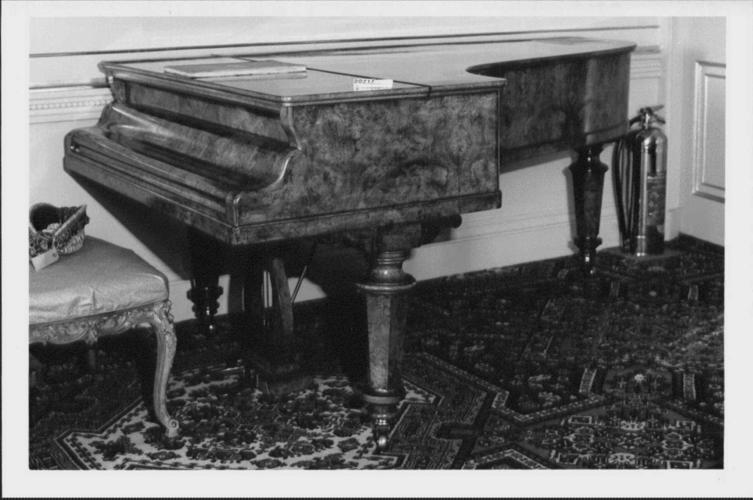S & P Erard
Piano
Walnut, ivory | 95.0 x 132.0 x 212.0 cm (whole object) | RCIN 20717
-
Burr-walnut grand piano, the lid with slightly projecting moulded rim, which opens to reveal music stand. Three hexagonal-in-section legs turned at top and bottom. Lyre-shaped support with two pedals.
With inscription, 'GREAT EXHIBITION / the only / COUNCIL MEDAL / FOR PIANOFORTES / TO ERARD OF / LONDON. '
Erard was founded by Sébastien Erard (1752-1831). Trained in Strasbourg, Erard moved to Paris in 1768 and began making pianos for the French nobility. He was later joined by his brother Jean-Baptiste Erard (1749-1826) and the business grew, especially after Royal commissions from Marie-Antoinette, but suffered during the French Revolution. The family opened a London outlet in 1790/1, which concentrated on the production of harps. Sébastien is famous for making a great number of technical improvements and inventions and took out between fifteen and twenty patents in England alone. After the death of Sébastien Erard, Jean Baptiste's son Pierre (1794-1855) took over the busines in Paris and London, winning a gold medal at the 1824 Paris Exposition and later becoming piano maker to Albert, Prince Consort. Many illustrious pianists played Erard instruments, including Liszt and Mendelssohn.Provenance
Presumably purchased after the Great Exhibition, 1851.
-
-
Medium and techniques
Walnut, ivory
Measurements
95.0 x 132.0 x 212.0 cm (whole object)
Category
Object type(s)








